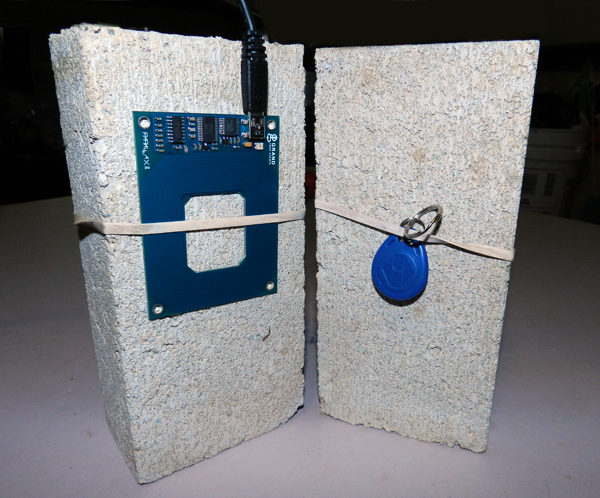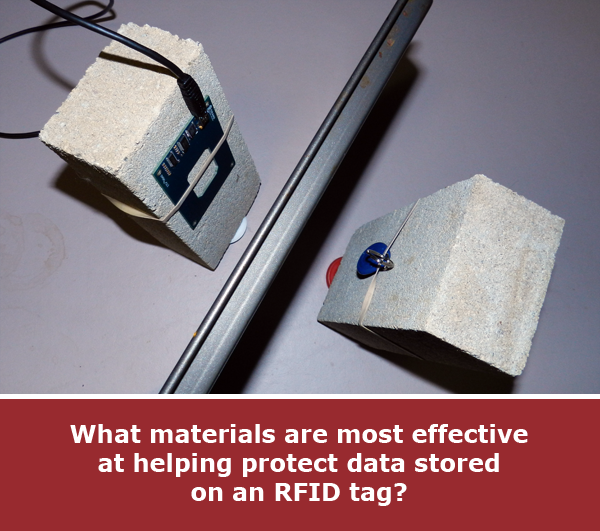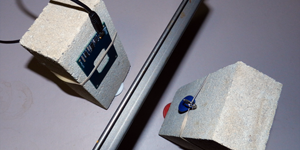Cyber Security: Hiding Personal Data from Prying Eyes
There's a science to keeping your personal data and possessions secure, both online and off. Experiment and discover ways to thwart would-be criminals with RFID, password, and robotics student science projects!

What sort of personal information do you and your family members enter online? Credit card and bank account numbers? Birth dates and social security numbers? Photos? Your home address? As a society, we provide more and more information online, but stories about hacking and data security are often in the headlines. Being smart about cyber security and taking precautions to help protect your information is important. While people love the convenience of shopping, banking, and sharing their lives online, no one wants to deal with the hassle of having their personal information stolen.
R-What?
We may often only think of data security in terms of information that is entered online, but would-be thieves have other targets, too. Have you seen or used an ID badge that unlocks a door with a wave, credit cards and transit passes that pay with just a tap on a machine, or car transponders that pay tolls without cars stopping at a tollbooth? These are all examples of RFID (Radio-Frequency Identification) technology.
How does RFID work? An antenna on an RFID reader sends out a signal looking for RFID tags that can talk to it. When a tag gets close enough to the reader, that tag briefly powers up and transmits the appropriate information back to the reader, such as the name of the person wanting to go through the door or the payment information for the tollbooth. With this electronic magic, a door is opened or a toll is paid quickly and easily.

Exactly Who is Collecting My Data?
While RFID technology is handy, it also means that someone with the right equipment could stand near you and collect information from your ID badge or credit card without your knowledge. The information stored on your RFID tag may be encrypted, so someone intercepting the information with an RFID reader does not necessarily have immediate and full access to the information the data contains. But the risk that the encryption can be broken or cracked by a determined hacker is real. One way to protect your information is to make it harder for a hacker to get your data in the first place.
To protect an RFID tag from people with bad intentions, you need to block the signals between the reader and the tag. Can you design an RFID protector that is both effective and convenient? Using the Science Buddies Project Idea Keeping It Private: Blocking RFID Readers from Reading your ID Card as a guide, students can investigate how well different materials block signals and put their design skills to work creating and testing their own protective solutions.
Exploring the Science of Cyber Security
Beyond RFID protectors, there are many ways for you to apply the scientific method to the problem of keeping your personal data and possessions safe. Password security is a great place to start. For some ideas, check out these Science Buddies Projects:
- Password Security: How Easily Can Your Password Be Hacked?: Social media, bank accounts, online grade N+
books—it seems like we need a password for everything! Discover what makes a strong password and see if you can create a computer program to accurately guess passwords. - Do People Use Different Passwords for Different Accounts?: This human behavior project explores how people create their passwords. Some people make one password for all of their accounts; others choose a different password for each account. The latter is much more secure, but requires more brainpower! Which category do you think most people fall into?
Using Science to Protect Physical Possessions
Why not also use science to safeguard your physical possessions? In the movies, valuables are protected with guards, high-tech alarms, and laser beam systems. Try your hand at advanced real-world security with these Science Buddies Project Ideas:
- Build a Motion-Activated Guard Robot (BlueBot Project #1): Love to build things? Want to protect your stuff? One of the robots you can build with the BlueBot 4-in-1 Robotics Kit is a security robot that rolls into action when it detects motion.
- X Marks the Spot: Build a Robot to Protect Your Treasures: Use LEGO® MINDSTORMS® to build a motion-detecting security robot.
- Invader Alert!: Using Scratch and Rasberry Pi, you can build a simple a motion-detection alarm system. (This project is part of an 8-project series using the Raspberry Pi Projects Kit.)
Security no longer ends with locking the front door. To keep your information and valuables safe, put your science skills to work!
Science Buddies Project Ideas and resources that help students explore cyber security are supported through generous donation from sponsors like Symantec and EMC.
Categories:
You Might Also Enjoy These Related Posts:
- Plastics and Earth Day - Science Projects
- Arduino Science Projects and Physical Computing
- 10+ Robotics Projects with the BlueBot Kit
- 5 STEM Activities with Marshmallow Peeps
- March Madness Basketball Science Projects: Sports Science Experiments
- Women in STEM! More than 60 Scientists and Engineers for Women's History Month
- Explore Artificial Intelligence and Machine Learning with Student AI Projects
- 10 Reasons to Do the Rubber Band Car Engineering Challenge










